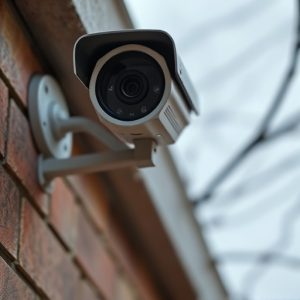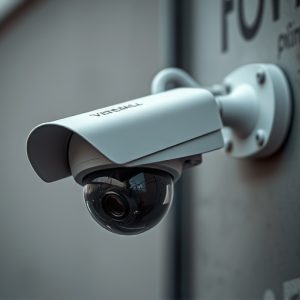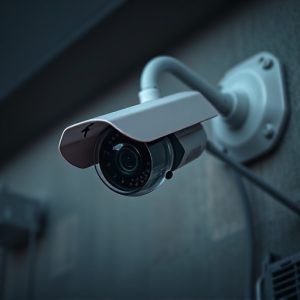Optimize Security: Best Placement for Fake Cameras & Legal Tips
Fake security cameras, strategically placed in high-visibility areas like entryways, windows, and ou…….
Fake security cameras, strategically placed in high-visibility areas like entryways, windows, and outside lighting fixtures, offer significant crime deterrence benefits without full system installation. Their best placement involves identifying under-monitored yet high-risk zones, combining them with subtle lighting for enhanced nighttime visibility, and positioning them at eye level or slightly above for maximum psychological impact while respecting privacy in both public and residential settings.
“Uncover the power of deception with our guide on the best placement for fake security cameras. In today’s world, these decoys are not just gimmicks but strategic tools for enhancing home and business security. We explore the various types available, from realistic to advanced LED models, offering both visual deterrence and aesthetic appeal. Learn key factors for optimal positioning, effective practices, and essential legal considerations, transforming your space into a secure and stylish environment.”
- Understanding Fake Security Cameras: Benefits and Types
- Key Factors to Consider for Optimal Placement
- Best Practices for Effective Deterrence and Aesthetics
- Legal and Ethical Considerations for Installation
Understanding Fake Security Cameras: Benefits and Types
Fake security cameras, also known as decoy or dummy cameras, are an effective way to deter crime and enhance home or business security. Understanding their benefits and types is crucial when deciding on the best placement for them. These cameras serve as a powerful visual deterrent, misleading potential intruders into believing that your property is under constant surveillance. By strategically placing fake security cameras, you can create the illusion of a robust security system, often deterring criminals before they even attempt to enter.
There are various types available, ranging from realistic indoor models to weatherproof outdoor designs. Some even come with LED lights, adding an extra layer of visibility and intimidation. The best placement for fake security cameras is often in highly visible areas, such as entryways, windows, or outside lighting fixtures. They can be attached to walls, ceilings, or placed on stands, depending on the desired effect and the specific security needs of the location. This simple yet effective measure can significantly improve overall security without requiring a full-scale installation.
Key Factors to Consider for Optimal Placement
When determining the best placement for fake security cameras, or decoys, there are several key factors to consider. Firstly, identify areas that are currently under-monitored but pose potential security risks. These could be blind spots in your property’s existing surveillance system or zones with limited natural light, making them ideal locations to install a decoy camera. Secondly, take into account the surrounding environment and foot traffic. Strategically place fake cameras near entry points, windows, valuable assets, or high-traffic areas to deter potential intruders, creating the illusion of enhanced security.
Illumination is another critical aspect. Fake security cameras with integrated lights can be particularly effective when positioned in areas with poor lighting conditions, such as alleys, parking lots, or dark corners. The visible presence of these decoys, combined with their light output, can act as a powerful deterrent and add an extra layer of protection to your property. Additionally, consider the camera’s field of view and angle; ensuring they cover essential areas without overlapping or missing crucial zones is vital for effective surveillance.
Best Practices for Effective Deterrence and Aesthetics
To maximize the deterrence and aesthetic appeal of a security camera shell with lights, consider best practices that blend functionality with visual impact. The best placement for fake security cameras is in highly visible areas where they can act as a strong psychological deterrent to potential intruders. Strategically positioning them on corners, entry points, and high-traffic zones sends a clear message of surveillance. Additionally, integrating lights enhances both the camera’s effectiveness and its appearance during nighttime or low-light conditions, making it harder for criminals to conceal their activities.
Aesthetically, these cameras should blend seamlessly with their surroundings. Opt for designs that mimic real security cameras while featuring subtle lighting elements. Using materials like metal and durable plastics helps create a realistic look. Mounting them at eye level or slightly above adds an air of professionalism and realism. Moreover, combining the cameras with realistic-looking decoys can further enhance deterrence without compromising the aesthetic appeal, creating a layered defense that dissuades would-be intruders.
Legal and Ethical Considerations for Installation
When considering the legal and ethical aspects of installing a security camera shell with lights, especially when using fake or decoy cameras, it’s crucial to understand the best placement strategies. The placement of these devices should be strategic, aiming to deter crime without invading privacy or causing distress. Public spaces like businesses, schools, and government buildings often benefit from strategically placed fake cameras as a deterrent. However, residential areas require more careful consideration; placing them in visible spots can enhance security without raising unnecessary concerns.
Ethical guidelines suggest that these devices should be clearly labeled as decoys to avoid misleading or scaring individuals. The best placement for fake security cameras should balance the need for safety with respect for privacy. This involves avoiding areas where individuals have reasonable expectations of privacy, such as bathrooms or bedrooms. By adhering to these considerations, property owners can effectively secure their spaces while ensuring compliance with legal and ethical standards.
The best placement of fake security cameras lies in balancing deterrence and aesthetic appeal. By strategically positioning these realistic replicas with integrated lights, you can create a sense of security while enhancing outdoor spaces. Consider key factors like visibility, natural surroundings, and legal constraints to maximize their effectiveness as both a deterrent and a design element. Remember, the right placement can transform your outdoor environment into a safe and visually appealing haven.


